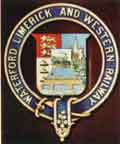 WLWR
coa. Source: © Keldale Fine Art
WLWR
coa. Source: © Keldale Fine Art
 WLWR
coa. Source: © Keldale Fine Art
WLWR
coa. Source: © Keldale Fine Art
Waterford and Limerick Railway [Incorporated 1845, Opened 9/5/1848 between Limerick and Tipperary [CEJF: with intermediate stations at Killonan, Pallas and Oola, Clonmel reached in April 1852, Fiddown a year after and Dunkitt in August 1853]. Waterford-Sallypark reached in 1854. [CEJF: The first train to run the full distance from Limerick was on 12/9/1854]] absorbed Limerick and Foynes (yet to build) in 1853 and Limerick and Ennis Railway in 1874, Athenry and Ennis Junction Railway plus Athenry and Tuam Railway in 1893(1894?). [CEJF: Worked the Limerick and Castleconnell Railway from 1858 and took it over in 1872. Worked the Waterford and Kilkenny Railway for a time, the Rathkeale and Newcastle Junction line, the Limerick and Kerry Railway and the Southern of Ireland Railway.] [KAM: The latter, the Southern of Ireland Railway, incorporated in 1865, with 28 miles of line between Thurles and Clonmel, opened in July 1880, was the last company to be absorbed into the GSR.] Became the Waterford, Limerick and Western Railway in 1896 after linking with Sligo via the Athenry and Tuam Extension to Claremorris Light Railway (independent unit absorbed by GSR in 1925) built 17 miles to Claremorris in 1894 and was further developed to join the MGWR at Colooney. Was the fourth largest railway in Ireland. Worked the Rathkeale and Newcastle Junction [1861] from 1867, the Limerick and Kerry [1873] from 1880, and the Tralee and Fenit [1880] from 1887. Route mileage in 1901 was 342 miles (only 32 double line). Operated boat services at Sallypark and Killaloe. [CEFJ: Having absorbed 11 different concerns it was] Absorbed by the GSWR on 1/1/1901.
Rolling stock: For opening six 2-2-2s from
Stothert and Slaughter. Four engines taken over from
contractor [CEJF: William Dargan]. First goods engines were
2 2-4-0s from Fairbairn in 1853. General duty 2-4-0s
followed from Vulcan.When absorbed by the GSWR, 58
locomotives, mostly Dubs and Kitson with several Vulcan
built, 159 coaches and 1350 wagons were transferred. Full
details of locos and builders in CEJF. [CEJF: Earliest
coaches, apart from some American style bogies, were 4
wheeler and later 6 wheelers and by 1900 composed the
majority of passenger vehicles together with 4 bogie
coaches (two with short corridors and toilet compartments).
In 1900 there were 159 coaches, of which 60 were less than
10 years old. Many were electrically lighted and were
converted bt the GSWR to gas.]
Works: Locomotive and carriage works in Limerick.
No locos built there [CEJF: Works built a 0-4-2 in 1892, an
0-4-4 in 1894 and three 0-6-0s subsequently]. Maintained by
GSWR after absorption. Used by CIE for wagon repairs.
Livery: Livery: Early liveries were colourful.
Originally engines medium green, in 1870s changed to brown,
lined light blue edged yellow, with brass nameplates,
polished brass dome covers and copper chimney tops. In
later years [CEJF: From 1889] passenger engines were
crimson lake [CEJF: banded in black and] lined with gold,
goods engines [CEJF: initially bore passenger livery but
then] black lined red . The company's crest, displaying the
arms of Waterford, Limerick, and Clonmel, quartered by a
locomotive, appeared on the cab sides and tenders of
selected locomotives. Coaching stock was the same lake
colour as the passenger locomotives and wagons were black.
1904 (RM 10/1904, p.282) Loco and tender - lake, gold
lining, goods - black with red panels and lining; coaches
lake, lined gold; wagons black. [[CEJF: All locos were
named and numbered.] Many ex-WLWR locos retained their
original numberplates and round spectacle glasses with
brass beading until the mid-1920s.
Staff: [CEJF:Chairmen were Earl of Glengall, Major
Massey, John Connolly, William Malcomson for 12 years to
1872, Abraham Stephens, Thomas Synnot, Sir James Spaight
and Percival Bernard.] The company had over a dozen loco
superintendents, five before 1857. The first of note was M.
Atcock 1861-1872. Others included T.Armitage for 18 months
to 1877, H. Appleby 1882-1888 [CEJF: 1883-89], J.G.
Robinson 1889-1900 (to Great Central Railway). First
Secretary was W.S.Saunders 1845 [CEJF: drowned before
opening] and last was J.J.Murphy. Others included
J.F.Nicholl to, and M.J.Kennedy from, 1877.
Signalling: When compulsory, Tyer's on double
lines, manual staffs on single lines. Signals originally
red and white half disks. Used back to back signals (i.e.
two arms for opposite directions on the same post) at level
crossings. The Athenry & Ennis branch had a staff and
ticket system in 1869. Staffs and tickets were:
Gort-Athenry white triangular, white, Gort-Ennis blue
square, blue.
Other: No gradient posts. Mileposts like little
metal open notebooks spelling out 1/4, 1/2 and 3/4, without
the number of miles. [CEJF: WLWR and GSWR stock used
different kind of continuous brake and a second tube needed
on WLWR vehicles after amalgamation. In early period, when
line did not extend beyond Tipperary, a 4th class existed
for passengers. Locos bore a round headboard with star for
working to Sligo]
Further reading:H.C.Casserly Outline of Irish Railway History, K.A.Murray and D.B.McNeill The Great Southern and Western Railway, W.E.Shepherd "Athenry to Ennis" JIRRS 290, J.O'Meara "The Athenry and Tuam Railway" JIRRS 289, J.O'Neill "Waterford's five railways" JIRRS 1086, The Waterford and Limerick Railway, C.E.J.Fryer, 2000.
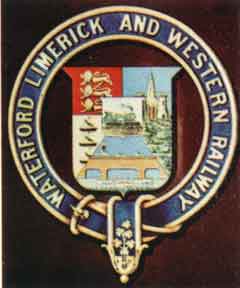 ©
Keldale Fine Art for orders
©
Keldale Fine Art for orders
Official seal illustrated on p.72 of Fryer.
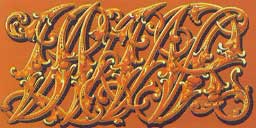 WLWR monogram. Source:
© G. Hartley (scan RCJ)
WLWR monogram. Source:
© G. Hartley (scan RCJ)
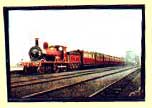 Moore WLWR
painting. Source: SRA397
Moore WLWR
painting. Source: SRA397
Locomotive nameplates:
Works & tenderplates:
Carriage and wagon plates
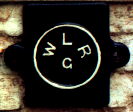 WLR axlebox
cover
WLR axlebox
cover
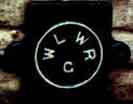 WLWR axlebox
cover
WLWR axlebox
cover
Footbridge:
Bridge Restriction:
Bridge Numbers:
Trespass:
Station:
 WLWR
station name. Source: D.Cronin
WLWR
station name. Source: D.Cronin
DC remarks more likely WLWR than GSWR, the latter not being
fond of enamel, except for bridge notices.
 WLWR fender.
Source: SRA397
WLWR fender.
Source: SRA397
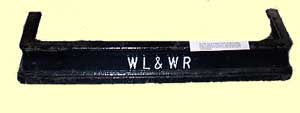 WLWR
fender. Source: D. Cronin (Waterford exhibit)
WLWR
fender. Source: D. Cronin (Waterford exhibit)
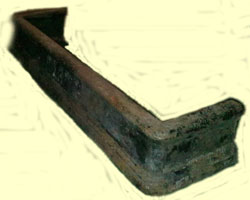 WLWR
fender. Source: DC. (full image
56K)
WLWR
fender. Source: DC. (full image
56K)
Detail 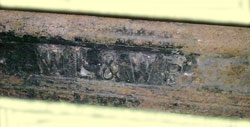 .
(full image
56K)
.
(full image
56K)
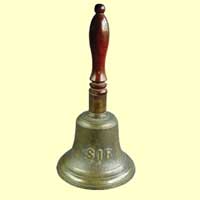 Southern of
Ireland Railway handbell. Source: TRA0507. (full image 11K)
Southern of
Ireland Railway handbell. Source: TRA0507. (full image 11K)
Mileposts:
Railchair:
Signalling:
Cutlery, china, ashtrays etc.:
Miscellaneous:
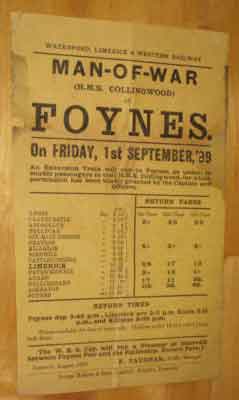 WLWR
poster 1899. Source: ebay1208
WLWR
poster 1899. Source: ebay1208
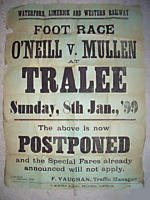 WLWR
poster. Source: ebay409 (full
image 30K).
WLWR
poster. Source: ebay409 (full
image 30K).
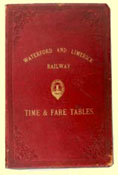 Waterford
& Limerick timetable. Source: GCR709 (full image 8.3K).
Waterford
& Limerick timetable. Source: GCR709 (full image 8.3K).
 Return to Index page, or go to Southern
page 7, Waterford and Central Ireland
Railway.
Return to Index page, or go to Southern
page 7, Waterford and Central Ireland
Railway. 
 Return to auction price
data on original pages
Return to auction price
data on original pages 
 For genealogy, go to my Lennan
genealogy pages
For genealogy, go to my Lennan
genealogy pages 
Page posted 27/7/1997. Revised 28/1/15